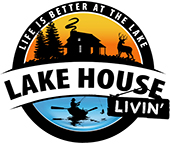The Invasive Species Problem
If you’re a current lake homeowner or are planning to buy a home by a lake, you should be aware of what common Invasive species examples threaten our lakes. An aquatic invasive species (AIS) is a plant, fish, crustacean, mollusk, or algae that doesn’t naturally occur in US waters. The United States National Park Service has identified about 250 non-native aquatic species from other continents that are now present in our lakes and rivers. AIS gets into our waters by hitchhiking on boat hulls, moving in soil and boat ballast water and through human activity. Simple actions such as dumping aquarium water down a drain also puts invasives into our water systems! Consequently, AIS infestations are a risk in any lake.
As earlier mentioned, forms of AIS include plants and non-plant organisms. They’re troublesome because they can compete for food and space with native species, destroy spawning areas, pollute water, and can grow into dense foliage carpets. Thus, once present, AIS negatively affects the ecosystem of a lake.
A Bit of Research
Many lakefront homeowners don’t know what invasive species are living in their lake. While information about AIS infestations are shared in local newspapers, lake association newsletters and government reports, many lakefront homeowners still can’t identify them. As a result, Lake House Livin’ looked at AIS species in twenty-two states with the most lakes. Those states include: Alaska, Arkansas, Arizona, California, Florida, Idaho, Illinois, Maine, Massachusetts, Michigan, Minnesota, Missouri, Montana, New Hampshire, New York, Ohio, Oregon, Pennsylvania, Texas, Washington, Wisconsin, and Utah. We reviewed each state’s AIS condition. Then we identified the most common invasive species in each state.
Most Common Invasive Species Examples
Interestingly, about twenty aquatic invasive species routinely appear in lakes of the states we surveyed. Here’s our list of the most common invasive species. Too illustrate that common AIS aren’t just plants, you’ll find common fish, mollusks, crustaceans and algae examples as well.
Common AIS Species in the US by Type (Sources include DNR data, Glandis, Wikipedia and More)
| Plants | Fish | Mollusks | Crustaceans | Algae |
| Hydrilla | Asian Carp | Zebra Mussels | Rusty Crayfish | Didymo |
| Elodea | Round Goby | Asian Clam | Spiny water flea | |
| Eurasian and Parrot-feather Water Milfoil | Rainbow Smelt | Chinese Mystery Snail | ||
| Purple Loosestrife | ||||
| Water Hyacinth | ||||
| Yellow Flag Iris | ||||
| Curly Pondweed | ||||
| Floating | ||||
| Water lettuce | ||||
| Yellow Floating Heart |
Furthermore, some species occur naturally in a few states but moved to other states where they became invasive. We also noticed that some species are regionally aggressive. For example, the giant Salvinia is a problem in southern states and the Water Chestnut is aggressive in northeastern lakes. Surely our list isn’t exhaustive but nevertheless, it’s a good overview of the most commonly occurring AIS. Interestingly, some native plants can get out of hand and become locally invasive. For example, some subspecies of the common Reed can take over lakeshore and reduce the shore’s plant diversity.
Resources for finding out about AIS in a specific Lake
At this point there’s not single reference source that reports the AIS status of all the US lakes and streams. However, they’re a number of ways you can find a lake’s AIS condition. Here’s some places to look for the information:
- Search the lake’s name and the state for AIS details
- Search state and federal websites such as Departments of Natural Resources, Fish and Wildlife agencies or the National Park Service.
- Reach out to a specific lake’s Lake Association for information.
- Check out local newspaper articles about AIS infestations.
Finally, you can also consult Michigan State University’s Link that lists each state’s Nature Resource Agencies at https://www.canr.msu.edu/fw/employment/state_natural_resource_agencies/index to find other data sources.
We hope this article about common Invasive species examples helps you be on the spot and identify AIS. Additionally, check out our blog “AIS – Not a Typical Sellers Disclosure Item” for a good overview of the risks of AIS.
More Posts You Might Like:






Recent Comments